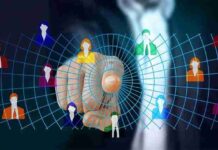
Predictive Analytics: Future Workforce Needs, Scenario Planning, Strategic Decision-Making
Data continues to be one of the prominent storytellers for a future-ready workforce. While data-driven insights will state the fundamental issues, the heart of every organization is its people. Even in the face of hard data, decision-makers must recognize how the decision-making might get eclipsed in the process of blind reliance on people analytics.
Organizations across industries are bracing for a challenging future of work, but amidst these disruptions, several opportunities for growth and innovation can lead to meaningful changes. As businesses embark on digital journeys, having the right data insights to drive your business and people strategy is vital to this change.
As new technologies emerge, work models change, and employee expectations evolve, informed decision-making and policy implementation will be critical for HR leaders to build a resilient workforce.
People analytics then becomes a powerful tool that leverages data to identify patterns, trends, and insights to devise solutions that address unique organisational concerns. This will inevitably enable businesses to grow, attract, engage, and retain top talent.
Predictive analytics has become a linchpin in the strategic decision-making process across various industries. By leveraging historical and current data, organizations can forecast future trends, behaviours, and risks, enabling them to make informed decisions.
How to Initiate and Strengthen A Data-Driven Work Culture
The first step of this process is to define your aspirations and compare them with the organisation’s current position. Understanding where the company is heading, what the leadership aspires to achieve, along with competitive and external factors, will help you ‘see’ your organisation in a new light and enable you to take the right action to realise organisational goals.
Next, once you know the existing gaps, it is necessary to determine which processes can be automated and which cones can be simplified for better efficiency. Additionally, HR needs to garner support from different stakeholders to ensure smooth rollouts and sustained usage.
All in all, implementing a people analytics-driven culture in the workplace isn’t as simple as buying a third-party solution or measuring one metric. It requires daily actions and progress to build a culture that leverages the power of data-driven decision-making.
Also Watch: How Gen AI Transforms Organisation Culture, Click Here
A predictive analytics tool performs finer, faster, more complex and less biased actions than humans. It processes and provides reliable and objective information that HR professionals use to accomplish their objectives more effectively. The objective of a predictive analytics tool is not to replace the HR professional but to support and help them in their decision-making.
Scenario Planning and HR: Onward to the Future
Learning must be delivered in a fundamentally new way by 2030. The most important function of scenarios comes from their ability to help people practice the future. Without a framework, imagining the future proves hard, and the results, inconsistent.
People usually collapse their speculations and mix them with their hopes and dreams to weave a plausible story that doesn’t reflect robust analysis through challenging assumptions, or the existence of equally compelling alternative narratives. Scenario planning enforces both, while offering up a robust set of futures that help organizations confront the future, and themselves.
When considering scenario planning in the HR context, it’s essential to combine cross-functional perspectives with predictive analytics using existing company data. To this end, HR will want to consistently conduct and document a cross-functional dialogue that brings experts from across the enterprise together — personal representatives, business leaders, workforce scientists, economists and so on.
This will put finance (costs); people managers (retention and attraction); business strategy (long-term planning); and the voice of the employee in conjunction with one another. The result? Effective balancing of economics and empathy in decision-making.
Predictive analytics has long been used in strategic workforce planning, but it can also help predict benefits costs, for example, and demonstrate the downstream consequences of workforce changes on any number of talent and reward strategies.
By imagining future events and analyzing the potential impacts, HR leaders are well-positioned to bake challenges and opportunities into their strategy. In essence, scenario planning sits at the intersection of, and supports, two things every HR professional is consumed with today: workplace strategy and business continuity.
The Role of Predictive Analytics in Decision Making
Organizations constantly seek ways to gain a competitive edge and make informed decisions. This is where predictive analytics comes into play. Predictive analytics is a powerful tool that enables organizations to uncover patterns, forecast trends, and make accurate predictions about future outcomes.
By leveraging historical data and employing sophisticated algorithms, predictive analytics provides valuable insights that aid decision-making processes. From finance to marketing to healthcare, businesses across various industries harness the power of predictive analytics to drive growth and optimize their operations.
Creating a fair and data-driven culture is integral. Best practices for integrating analytics into the daily workflows of HR and other functional teams to strengthen are:
- Establishing a data-informed and fair culture starts with a clear definition of “fairness”. Take diversity and inclusion, for instance. If these are identified as top priorities, it’s imperative to precisely articulate what inclusion means within the organisation.
- Determine methods to measure the presence or absence of inclusion for ongoing evaluation.
- Focus on defining priorities and setting measurable benchmarks as foundational steps.
- Incorporate personal insights and conclusions from leaders, peers, and team members alongside data analysis. It’s the synthesis of these perspectives that contributes to the overarching goal.
How do you see the role of HR analytics evolving, and what steps are you taking to ensure your HR team remains at the forefront of this transformation?
There’s no denying the impact of data analytics on decision-making and organisational success. It’s a tool that reinforces the efficacy of interventions, assuming you’re measuring the right elements. However, an essential mindset shift is required. We must embrace technology while simultaneously acknowledging its limitations.
The key bias to overcome is the misconception that technology and analytics are infallible, when in fact, they are not. They come with their fair share of “ifs” and “buts.”
So, beyond the technical aspects, there’s a crucial need to nurture a mindset within the organisation—one that wholeheartedly accepts the power of analytics, data, and technology and also the indispensability of human judgment.
This shift is paramount. Additionally, defining your objectives and what success looks like is fundamental. Establishing clear metrics allows you to gauge progress and proximity to your goals. The continual discourse around these metrics ingrains data-driven thinking into the organisational DNA.
Note: We are also on WhatsApp, LinkedIn, Google News, and YouTube, to get the latest news updates, Subscribe to our Channels. WhatsApp– Click Here, Google News– Click Here, YouTube – Click Here, and LinkedIn– Click Here.








